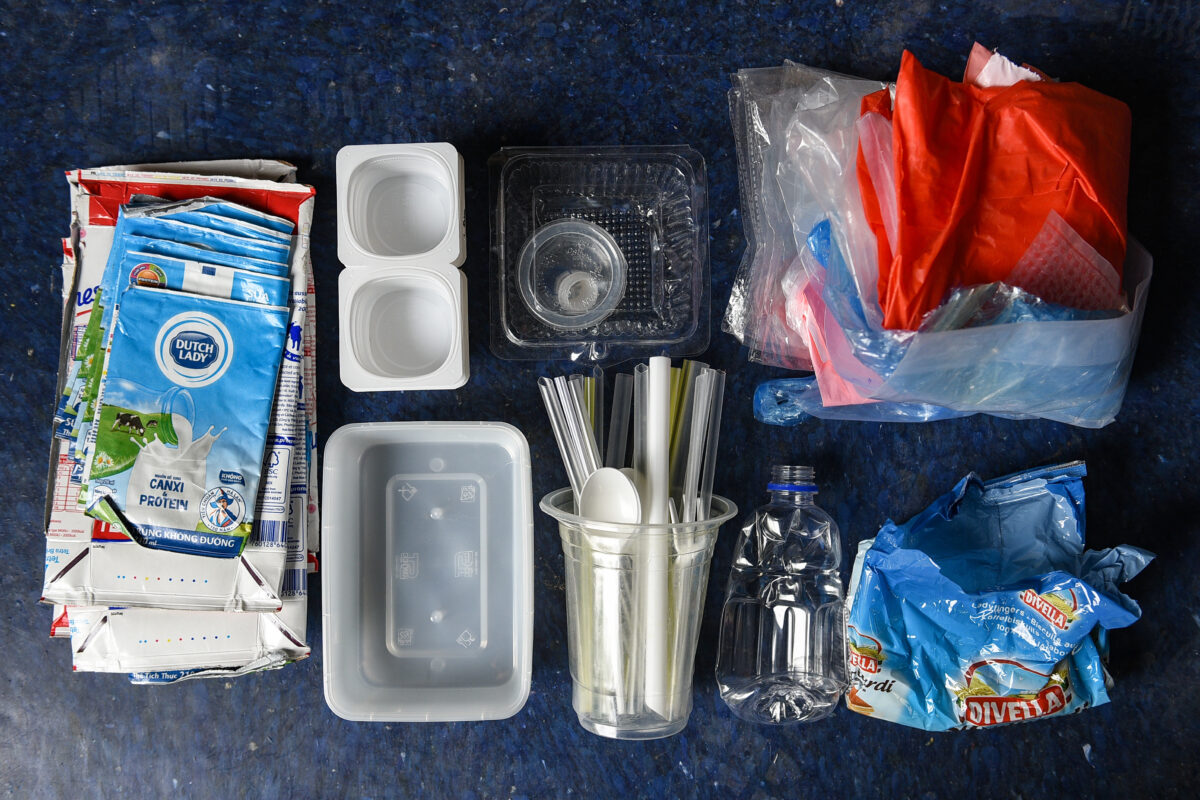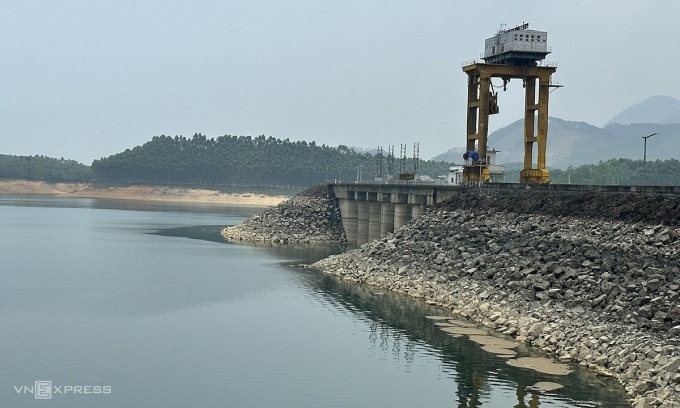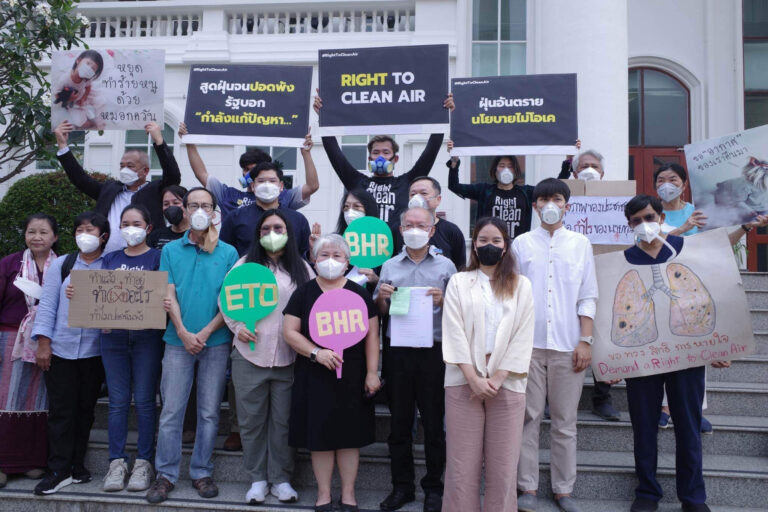HO CHI MINH CITY, VIETNAM ― On the mezzanine floor of a workshop in Thu Duc, a city within Vietnam’s economic hub Ho Chi Minh City, plastic bags and boxes are spread all over the floor, waiting to dry out.
They’re soon to be processed and recycled by the team at PLASTICPeople into everyday objects, from coasters to furniture, and even construction materials.
Founded in 2019, PLASTICPeople is a social enterprise striving to become part of a solution to mounting plastic waste in Vietnam and worldwide.
“We can turn the plastic waste we collect into anything,” said Nano Morante, an Argentine entrepreneur and founder of PLASTICPeople.
“All our products are recycled from domestic and industrial waste like plastic bags, milk cartons, plastic cups and boxes, and even fabric from medical masks.”
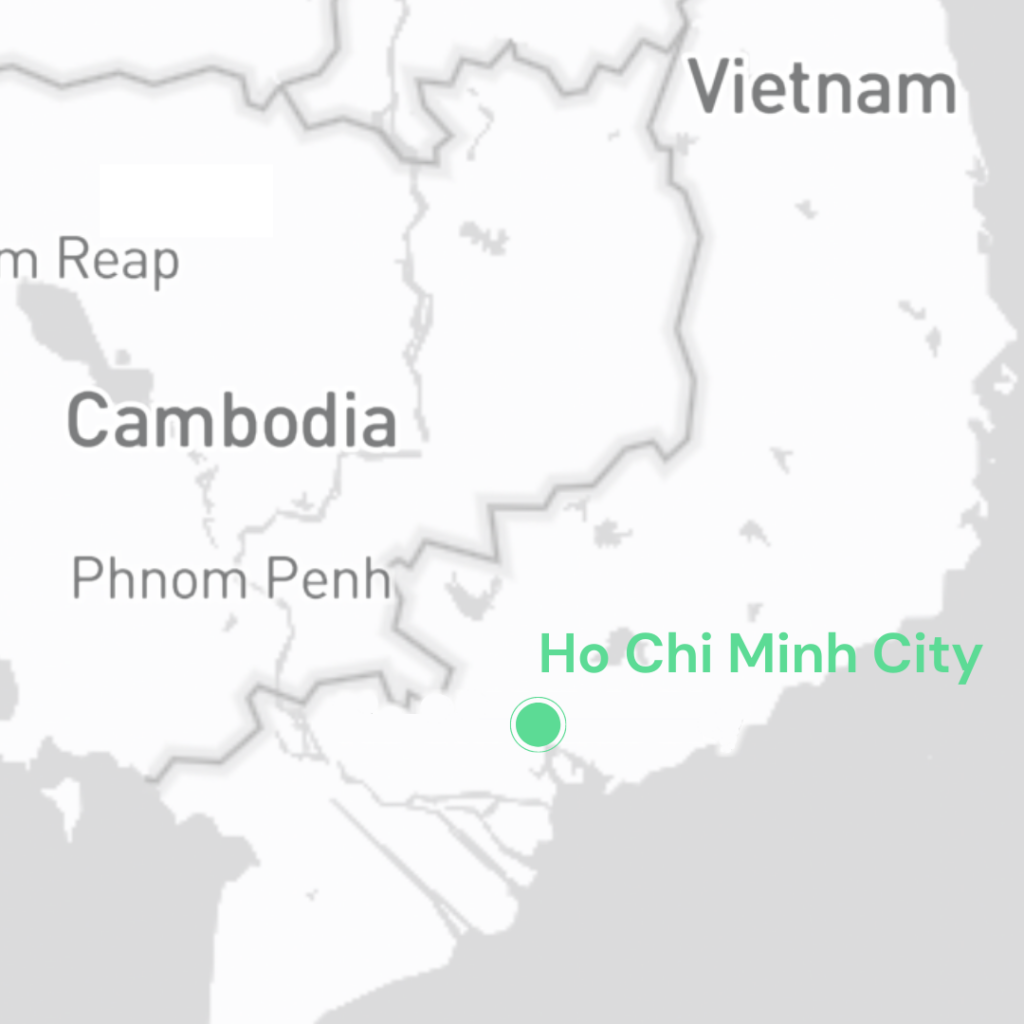
The company’s presence in Vietnam contrasts sharply with the country’s repeated failure to sort waste at source.
One private entity could never replace the government’s role in waste management, experts say. The question is whether it could inform and inspire the government to better enforce its regulations concerning plastic waste.
“Processing and reduction of plastic waste requires the participation of everybody under a waste separation at source model,” said Vu Thanh Ca, a lecturer at the Environment Department of the University of Natural Resources and Environment based in Hanoi.
“This requires a collective effort from individuals, to regulations and a specific implementation roadmap by the state, alongside investment in infrastructure to collect and process waste.”
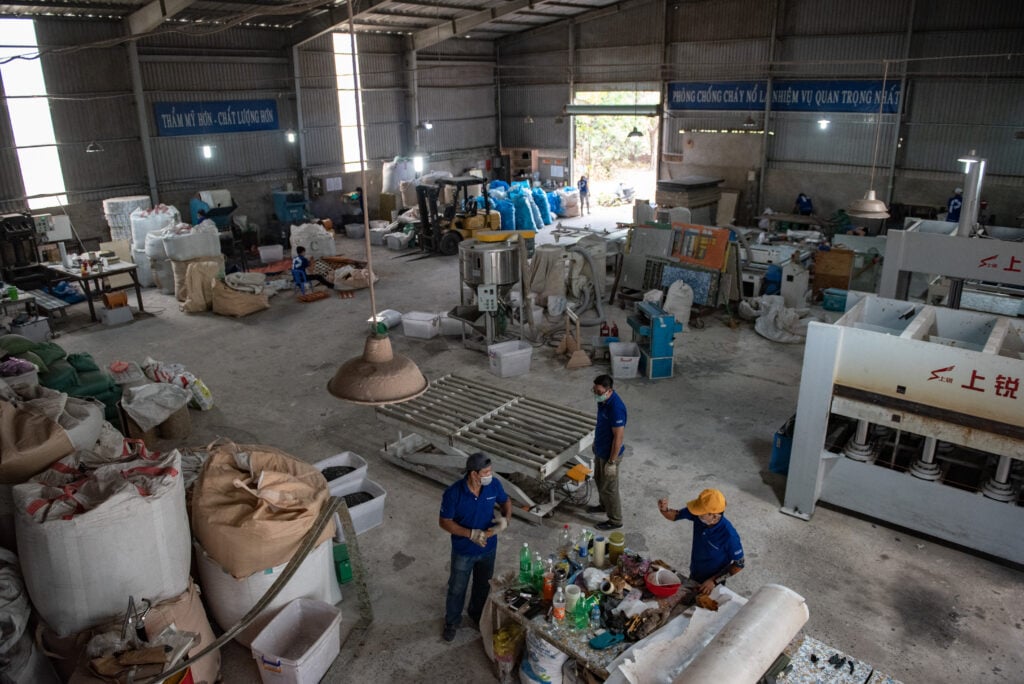
Vietnam has one of the world’s fastest-growing economies. The country has been undergoing rapid urbanization, with sky-high apartment blocks rising in major cities and on their peripheries.
But with that comes increasing pressure on already inadequate waste collection and processing infrastructure.
A sizeable proportion of household waste are single-use plastics, from nylon bags freely available at markets and shops to plastic cups and containers that have mushroomed since the pandemic popularized food deliveries.
The plastic that is not collected or processed goes down the drain and finds its way into canals, rivers and eventually the ocean, polluting the marine environment.
“The most common way to dispose of waste today is to bury it in landfills,” said Ca. “Meanwhile, urban infrastructure is insufficiently developed and management capacity has failed to adequately collect and process waste.”
Nationwide, Vietnam generates 3.6 million tons of plastic waste every year, and only 1.28 million tons is recycled, according to a 2020 study by IUCN and Quantis and Environmental Action.
Seventeen years ago, with funding from the Japan International Cooperation Agency (JICA), Hanoi started piloting a waste sorting at source project called 3R, which stands for reduce, recycle and reuse. The project ended after three years, and with that waste sorting was all but forgotten.
Starting in 2017, Ho Chi Minh City began its own waste sorting at source initiative, with a clear roadmap aiming to have a city-wide scheme by 2020. However, this too has yielded poor results.
“All the waste is tossed into one truck because there’re no funds for transport, meaning sorting at source has no value,” Ca said. “The project failed because it was just an experiment in a few locales. It wasn’t synchronized, drastic enough nor formalized.
From waste to furniture
When someone delivers plastic to PLASTICPeople, they receive a membership code and instructions on how to sort plastic at home. Wet and dirty plastic won’t be accepted.
For every 30 kilograms of plastic collected, the person receives a random recycled item, like five coasters, for example, as a gift.
“We want everyone to see where their waste goes and what comes out of it,” said PLASTICPeople’s Morante. “This also allows us to control and know the waste’s source.”
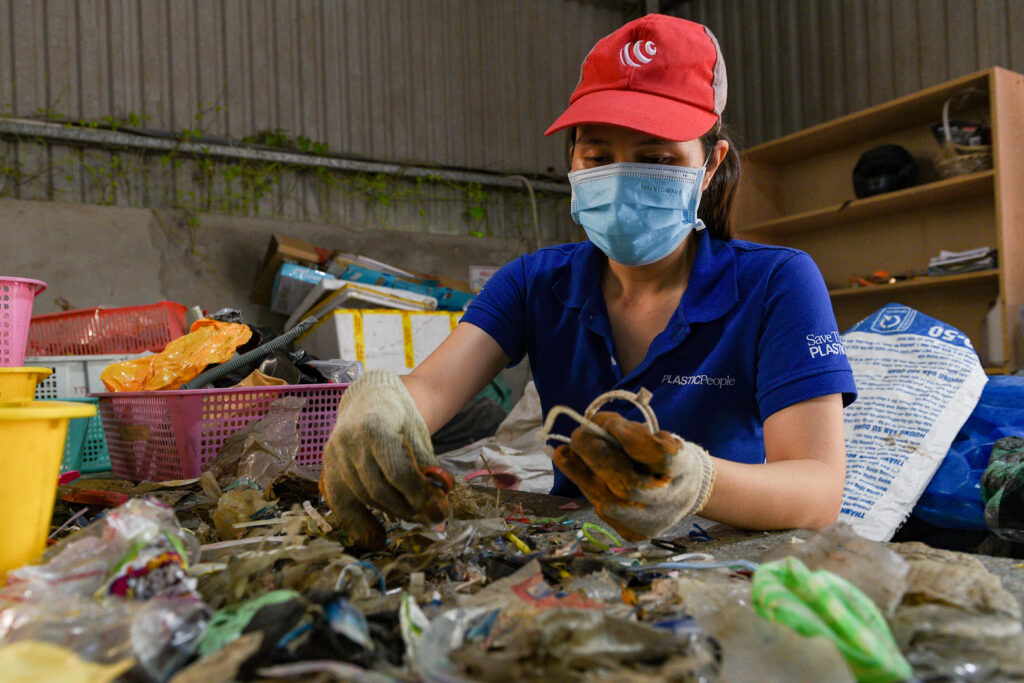
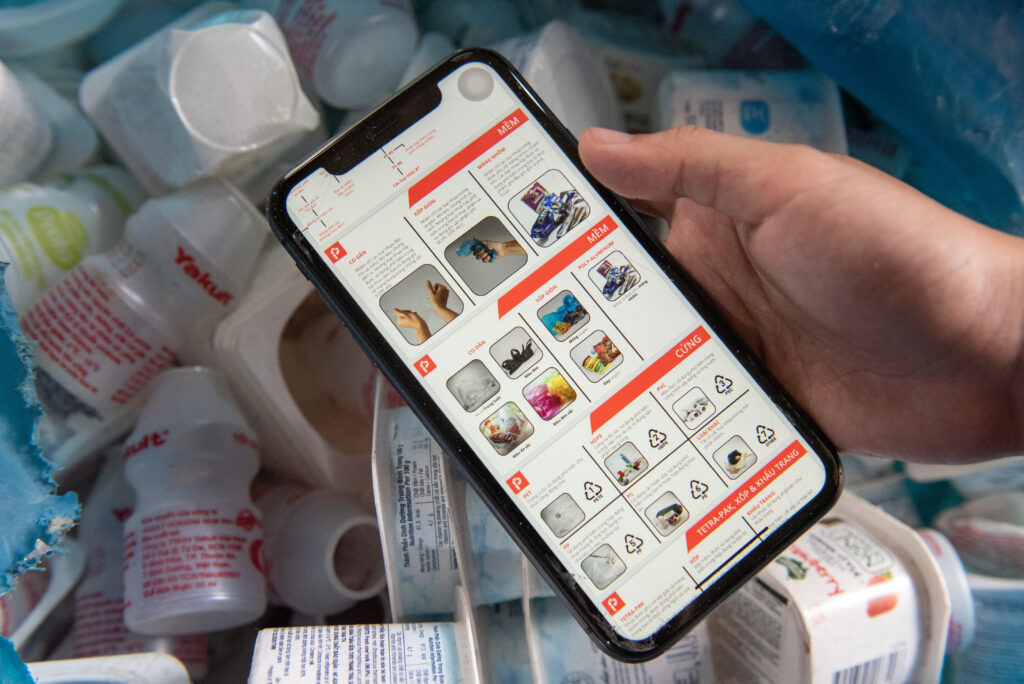
Once collected, the plastic is left to dry, sorted, crushed and pressed into 1.2 meters by 2.4 meters panels that vary in thickness and weight, depending on the end product.
When building PLASTICPeople, Morante and his colleagues spent time learning about the source of plastic waste, how to handle it, and especially looking for potential markets and customers for their products.
The quality standards of the furniture and construction markets that the company is aiming for are very high, Morante said. Without meeting their requirements, maintaining the plastic recycling business seems impossible, as there would be no customers.
“If our products are not aesthetically pleasing, are not useful, or have no market, all we do is alter the shape of waste, from one kind of waste to another,” he said. “If so, then the plastic recycling model is not sustainable.”
This is where the issue of scalability arises, argues Ca. While the researcher commends PLASTICPeople’s work of turning waste into useful goods, their model serves a very niche market. The issue of plastic, however, requires a mass level solution.
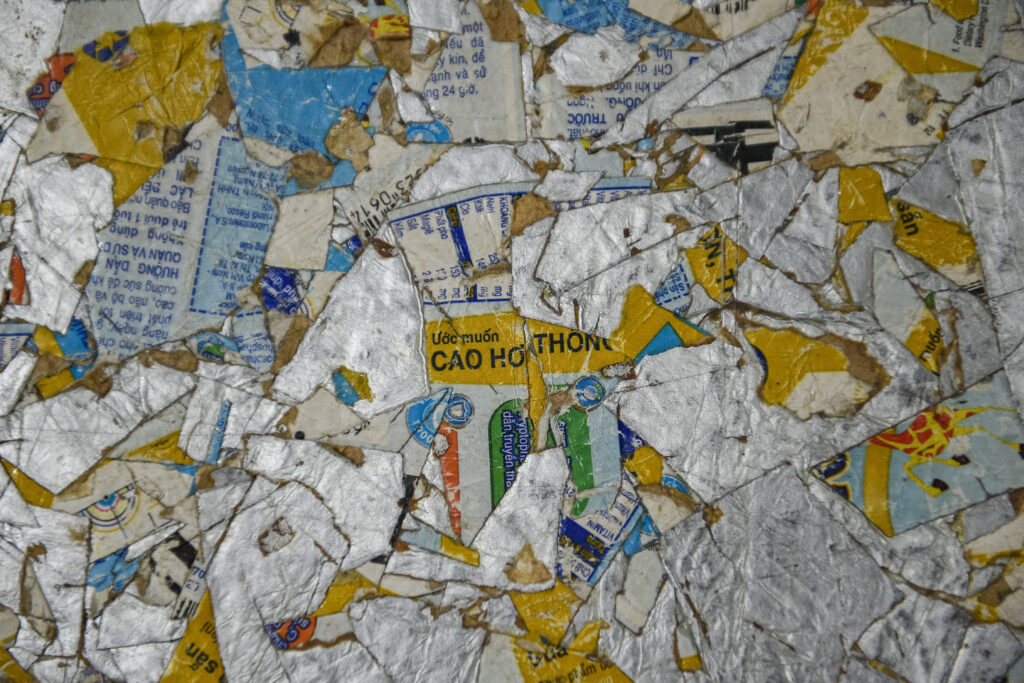
Every day, PLASTICPeople recycles between one and 1.5 tons of plastic waste, which is delivered from recycling companies, scrap collectors, organizations and individuals. Every month, PLASTICPeople receives from 200 to 300 kilograms of plastic waste from 250 households.
That’s a drop in the ocean, even as the company plans to expand to other provinces in the next few years. Ho Chi Minh city alone, which is home to 14 million people, generates about 9,000 tons of household waste every day, 1,800 tons – or 20% – of which is plastic. However, only 11% of the plastic is recycled.
“The government needs to raise environmental taxes levied on plastic producers and plastic processing villages, while also increasing (waste) collection fees,” said Ca. The tax revenue, he said, then can be used to support and scale up companies like PLASTICPeople.
To date, PLASTICPeople has recycled more than 650 tons of plastic waste. Their products include construction materials and furniture and homewares that grace cafes and offices in Vietnam, Cambodia, Japan and Spain.
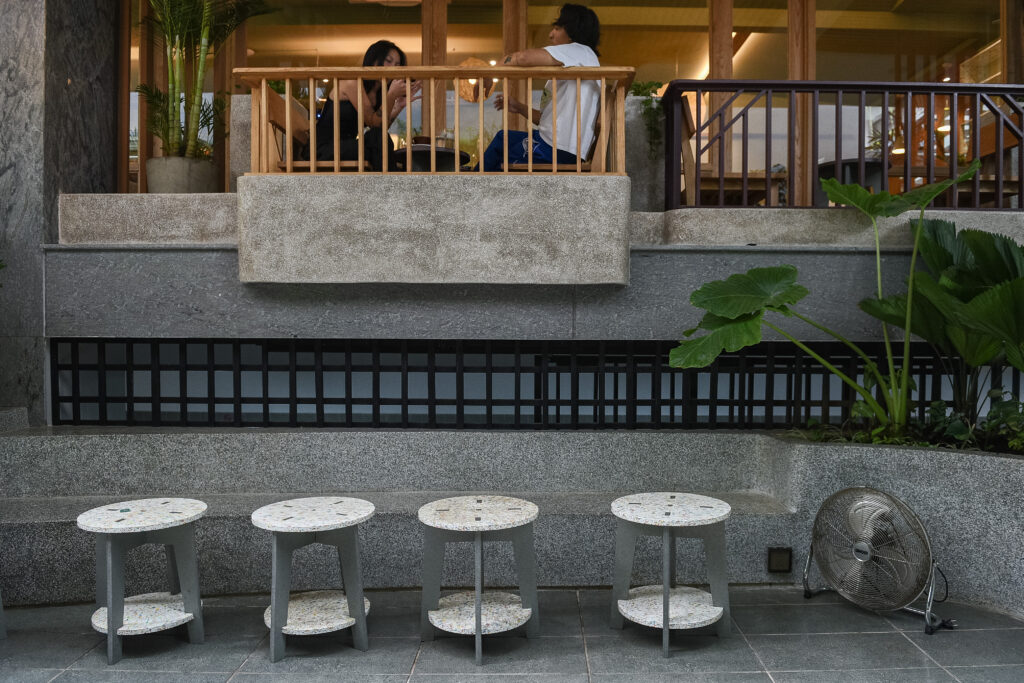
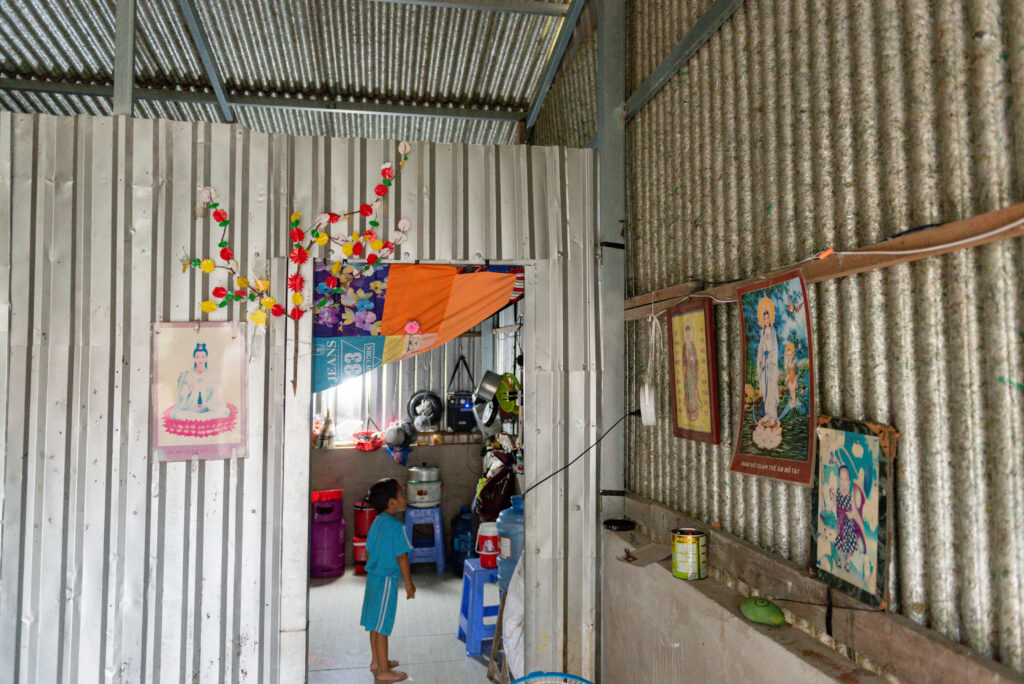
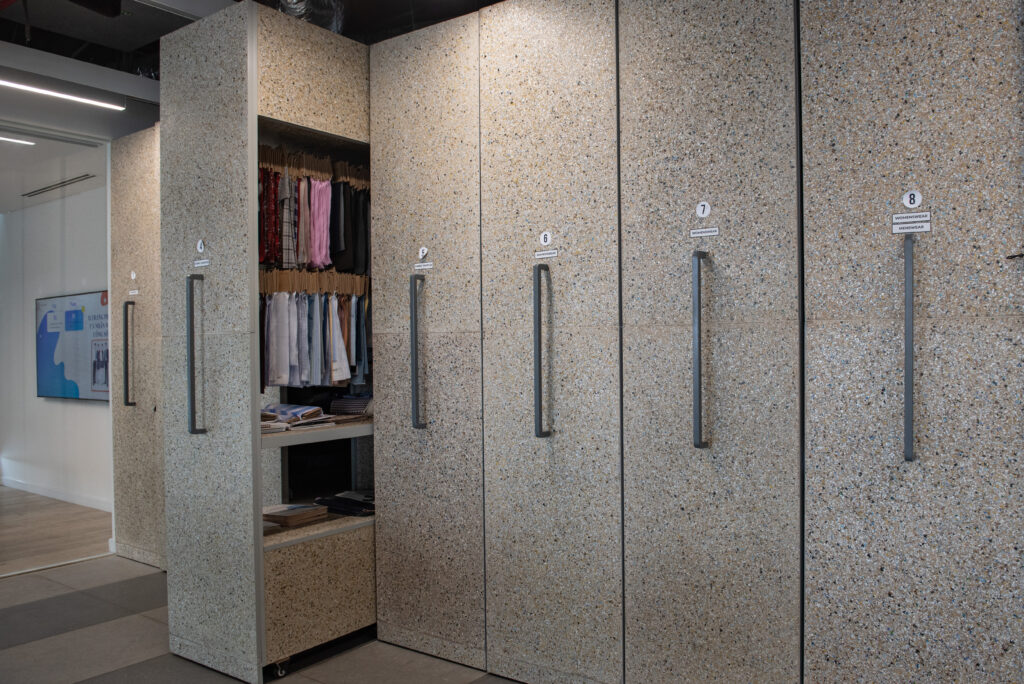
In the National Action Plan for Management of Marine Plastic Litter by 2030, Vietnam targets to cut marine plastic litter by 50% by 2025, and by 75% by 2030.
To achieve that, the country plans to ban producing and importing plastic bags for domestic use by 2026 and most single-use plastic products by 2031.
Morante stressed that PLASTICPeople is not in itself a change-maker – they are just a bridge, or a tool, so everyone could enact change.
“We want to offer a viable solution to extend the life cycle of plastic,” he said. “How people use plastic is a problem, but how people treat plastic is also a solution.”
This story was supported by Internews’ Earth Journalism Network.


